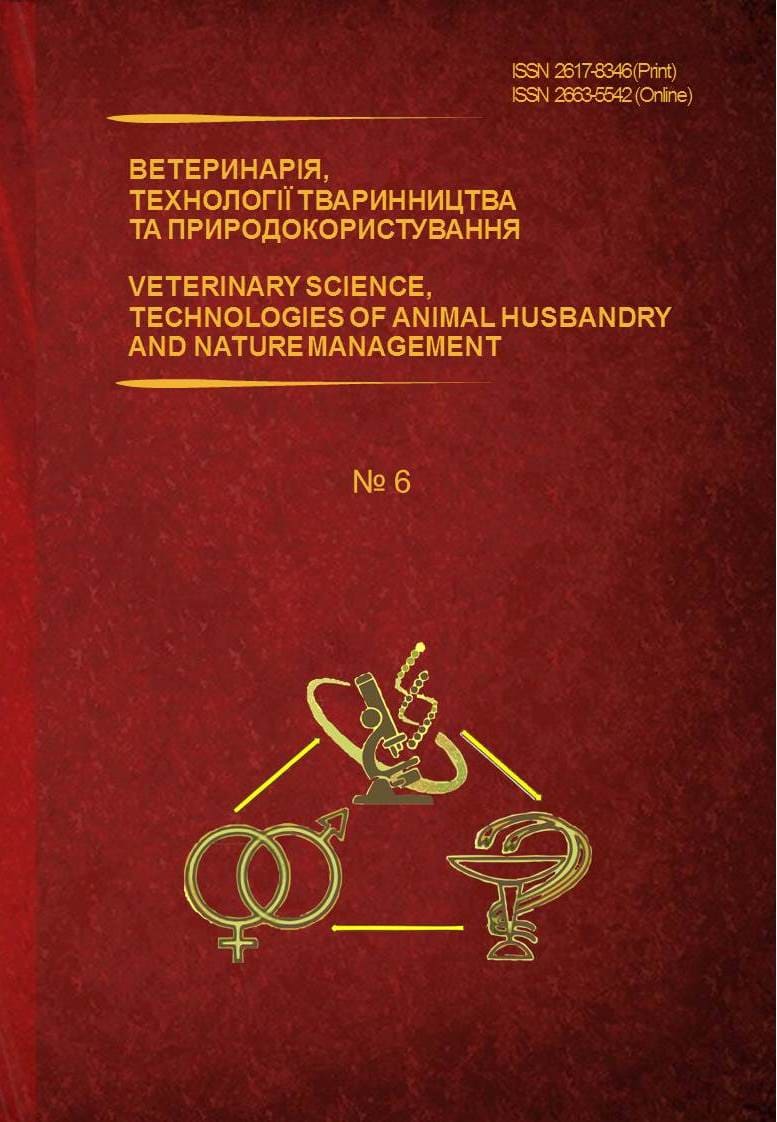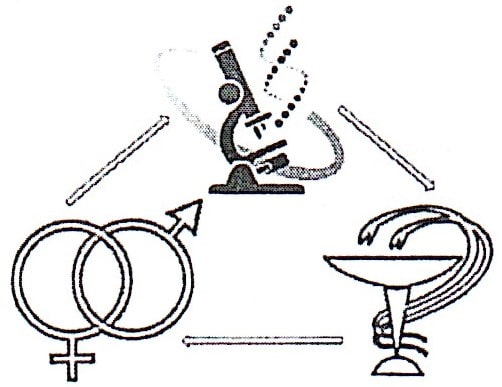Комплексна система заходів боротьби з іксодовими кліщами в західному регіоні України
Анотація
Для боротьби з кліщами необхідна розробка комплексної системи заходів, що передбачають наукову і практичну складову. Комплексний метод є найефективнішим способом боротьби з членистоногими. Дослідження проводили протягом 2018-2020 років у західному регіоні України (Хмельницька, Чернівецька, Вінницька області). У кожній області було відібрано по два експериментальних приватних господарства і одне контрольне, територія господарств становила близько 20000 м2. Протягом усього періоду досліджень у всіх областях було зібрано 379 кліщів D. reticulatus і 165 кліщів I. ricinus. За результатами наших досліджень, використання акарицидних обробок, а також механічне очищення території забезпечували зниження кількості популяцій кліщів на 50-90 % протягом 6-8 тижнів у біотопах, а також на собаках. Крім того встановлено, що механічна очистка території також допомагала зменшити привабливість місцевості для дрібних ссавців.
Завантаження
Посилання
Abbas, R. Z., Zaman, M. A., Colwell, D. D., Gilleard, J., & Iqbal, Z. (2014). Acaricide resistance in cattle ticks and approaches to its management: the state of play. Veterinary parasitology, 203(1-2), 6–20. DOI: 10.1016/j.vetpar.2014.03.006.
Benelli, G. (2018). Plant-borne compounds and nanoparticles: challenges for medicine, parasitology and entomology. Environmental science and pollution research international, 25(11), 10149–10150. DOI: 10.1007/s11356-017-9960-y.
Benelli, G., & Pavela, R. (2018). Repellence of essential oils and selected compounds against ticks-A systematic review. Acta tropica, 179, 47–54. DOI: 10.1016/j.actatropica.2017.12.025.
Chanda, E., Thomsen, E. K., Musapa, M., Kamuliwo, M., Brogdon, W. G., Norris, D. E. … Coleman, M. (2016). An Operational Framework for Insecticide Resistance Management Planning. Emerging infectious diseases, 22(5), 773–779. DOI: 10.3201/eid2205.150984.
Dantas-Torres, F., & Otranto, D. (2016). Best Practices for Preventing Vector-Borne Diseases in Dogs and Humans. Trends in parasitology, 32(1), 43–55. DOI: 10.1016/j.pt.2015.09.004.
Dantas-Torres, F., Chomel, B. B., & Otranto, D. (2012). Ticks and tick-borne diseases: a One Health perspective. Trends in parasitology, 28(10), 437–446. DOI: 10.1016/j.pt.2012.07.003.
De la Fuente, J., & Contreras, M. (2015). Tick vaccines: current status and future directions. Expert review of vaccines, 14(10), 1367–1376. DOI: 10.1586/14760584.2015.1076339.
Diuk-Wasser, M. A., Vannier, E., & Krause, P. J. (2016). Coinfection by Ixodes Tick-Borne Pathogens: Ecological, Epidemiological, and Clinical Consequences. Trends in parasitology, 32(1), 30–42. DOI: 10.1016/j.pt.2015.09.008.
Eisen, L., & Dolan, M. C. (2016). Evidence for Personal Protective Measures to Reduce Human Contact With Blacklegged Ticks and for Environmentally Based Control Methods to Suppress Host-Seeking Blacklegged Ticks and Reduce Infection with Lyme Disease Spirochetes in Tick Vectors and Rodent Reservoirs. Journal of medical entomology, 53(5), 1063–1092. DOI: 10.1093/jme/tjw103 .
Filippova, N. A. (1977) Ixodid ticks of the subfamily Ixodinae. Fauna of the USSR. Arachnida. Leningrad, Publishing House Nauka.[ in Russian]
George, D. R., Finn, R. D., Graham, K. M., & Sparagano, O. A. (2014). Present and future potential of plant-derived products to control arthropods of veterinary and medical significance. Parasites & vectors, 7, 28. DOI: 10.1186/1756-3305-7-28.
Guglielmone, A. A., Robbins, R. G., Apanaskevich, D. A., Petney, T. N., Estrada-Peña, A., & Horak, I. G. (2014). Hard ticks (Acari: Ixodida: Ixodidae) of the world. Springer, Heidelberg.
Lacey, L. A., Grzywacz, D., Shapiro-Ilan, D. I., Frutos, R., Brownbridge, M., & Goettel, M. S. (2015). Insect pathogens as biological control agents: Back to the future. Journal of invertebrate pathology, 132, 1–41. DOI: 10.1016/j.jip.2015.07.009.
Levytska, V. A. (2020). Comparative effectiveness of acaricides. Scientific Messenger of Lviv National University of Veterinary Medicine and Biotechnologies. Series: Veterinary sciences, 22(99), 3–7. DOI: 10.32718/nvlvet9901. [in Ukrainian]
Lew-Tabor, A. E., & Rodriguez Valle, M. (2016). A review of reverse vaccinology approaches for the development of vaccines against ticks and tick borne diseases. Ticks and tick-borne diseases, 7(4), 573–585. DOI: 10.1016/j.ttbdis.2015.12.012.
OIE (2010) Animal Health Code, 19th edn. World Organisation for Animal Health, Paris.
Pavela, R., Canale, A., Mehlhorn, H., & Benelli, G. (2016). Application of ethnobotanical repellents and acaricides in prevention, control and management of livestock ticks: A review. Research in veterinary science, 109, 1–9. DOI: 10.1016/j.rvsc.2016.09.001.
Pfäffle, M., Littwin, N., Muders, S. V., & Petney, T. N. (2013). The ecology of tick-borne diseases. International journal for parasitology, 43(12-13), 1059–1077. DOI: 10.1016/j.ijpara.2013.06.009.
Pfister, K., & Armstrong, R. (2016). Systemically and cutaneously distributed ectoparasiticides: a review of the efficacy against ticks and fleas on dogs. Parasites & vectors, 9(1), 436. DOI: 10.1186/s13071-016-1719-7.
van Wieren, S. E., Braks, M. A., & Lahr, J. (2016). Effectiveness and environmental hazards of acaricides applied to large mammals for tick control. In: Ecology and prevention of Lyme borreliosis. Wageningen Academic Publishers, 75–89.
Yavuz, O., Aksoy, A., Das, Y.K., Arslan, H.H., Gurler, A.T., Yarim, G.F. … Atmaca, E. (2017). An evaluation of the efficacy, clinical safety, blood levels and milk concentrations of flumethrin and cypermethrin formulations used for tick control in cattle. Large Anim. Rev., 23 (3), 97–101.
Переглядів анотації: 1407 Завантажень PDF: 698





